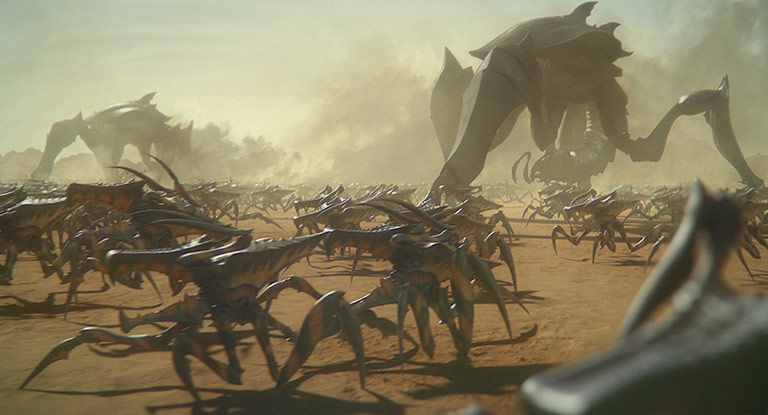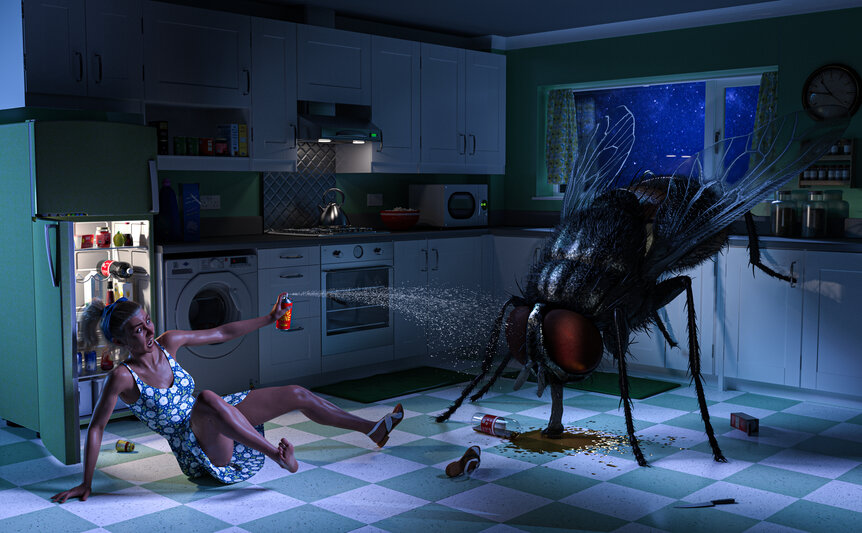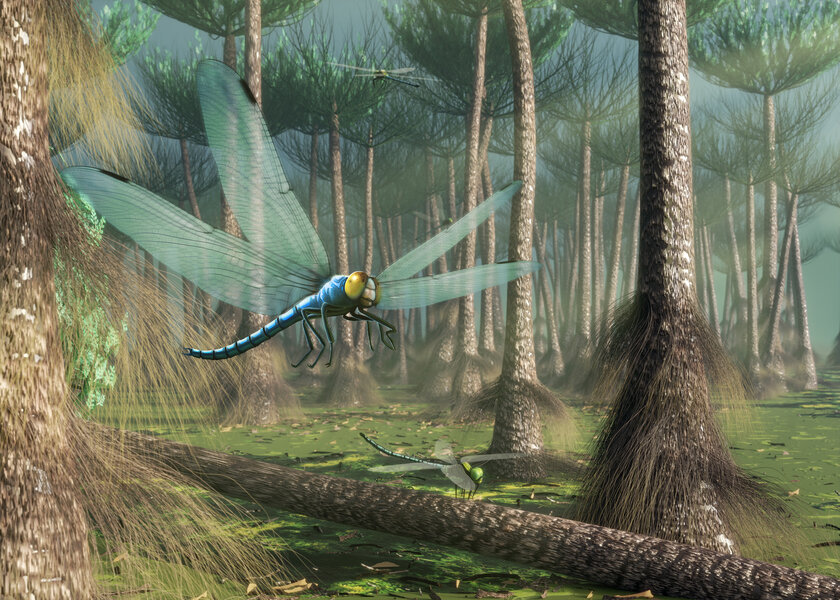Create a free profile to get unlimited access to exclusive videos, sweepstakes, and more!
Could the bugs in 'Starship Troopers' really exist? The science behind the fiction
We really hope not.

In 1959, Robert Heinlein envisioned a future in which humanity is engaged in interstellar conflict with a species of bug-like aliens. His novel, Starship Troopers, went on to win the Hugo Award and was later adapted to film by Paul Verhoeven and Edward Neumeier. The movie’s satirical take on Heinlein’s novel was largely lost on audiences when it hit theaters 25 years ago, with some calling it outright fascist propaganda. But in the intervening two and a half decades, audiences have come around to recognizing Starship Troopers for the critical if gratuitously gory sendup of militarism and fascism that it is.
With the film’s legacy secure, we want to turn our attention away from the political machinations of future humans and toward the physical reality of the enemy they face. On this, the 25th anniversary of the victory against the bug menace, we would like to know more: could those bugs have even existed?
LIVING ON KLENDATHU
Despite humanity’s many activities on the bug home world, we don’t have a lot of information about their planet. We know it’s an arid desert planet in the Klendathu system. We know it’s about as far away as it could be, on the opposite end of our galaxy. And we know, or we can at least surmise from the movie, that the atmosphere is breathable, and the planet has Earth-like gravity. All of which is great if you’re a human soldier on a mission to avenge Buenos Aires, but it’s bad if you want to build up a society of gigantic sentient bugs.
With the evidence we have at hand, Klendathu appears to be shockingly similar to Earth and that limits the sorts of organisms which can live there. When we think about evolution, we often think of the fight for survival and reproduction. In response to natural pressures, a species gets better at avoiding being eaten, acquiring resources, and reproducing. We don’t often think about planetary limitations like the mass of the planet or the composition and density of the atmosphere.
Unless Klendathu has some unseen environmental ace up its sleeve, any bugs which live there — intelligent or otherwise — wouldn’t be much larger than the bugs we have at home. Here on Earth, our bugs tend to remain blessedly small, maxing out at about the size of a human hand. That upper size limit isn’t because bugs don’t want to be larger, it’s because the environment won’t allow it for a couple of reasons.
First, we have the classic nemesis of all large creatures, the square-cube law. Our bodies must be supported by our skeletons — whether you have inside bones or outside bones — and their ability to do that diminishes as the overall size of an organism increases. That’s because your total mass increases faster than the cross section of your bones.
By way of example, let's imagine an alien bug in the shape of a cube. A two-centimeter by two-centimeter cube bug has a cross sectional area of four square centimeters and a volume of eight cubic centimeters. If that same bug then grows into a three-by-three bug, it has a cross sectional area of nine square centimeters and a volume of 27 cubic centimeters. The cube bug has become 50 percent taller and 50 percent wider. In the meantime, its exoskeletal cross section has roughly doubled while its area more than tripled. Eventually, the increase in mass becomes too much for the exoskeleton and the bug collapses under its own weight.
The second limitation comes down to oxygen. Earthly bugs of all varieties lack lungs. They have no way to manually exchange gasses between their bodies and the environment. Instead, they breathe passively through openings in their exoskeleton. Their bodies are small enough, and the oxygen content in the atmosphere high enough, that atmospheric pressure pushes oxygen into their bodies. The larger the body, the harder it is for oxygen to permeate all the way through. A bug the size of the ones seen in Starship Troopers would suffocate before they ever had a chance to attack.
THE REAL BUG HOMEWORLD
If the arachnids — which are poorly named, by the way, with barely a spider, scorpion, or mite among them — can’t live on the Klendathu we see on screen, where could they live? It’s possible, of course, that in the endless expanse of the cosmos, there might be a world capable of supporting insect-like animals of unusual size.
In fact, we don’t have to look very far to find just such a planet. During the Carboniferous period, roughly 350 million years ago, the Earth was overwhelmed by various gigantic bugs. Some of the first animals to get truly huge were bugs, many of whom took advantage of the ocean’s buoyancy to support their weight before spreading onto land. In 2021, researchers at the University of Cambridge announced the discovery of a giant fossil millipede which grew to nearly three meters in length during its lifetime. Even earlier, during the Silurian period, giant scorpions several feet in length roamed the ancient seas.
Today, however, even our biggest bugs are pale shadows of their former glory. Sometime over the last 300 million years or so, something changed, and that something is oxygen. Earth’s present day atmosphere is about 21 percent oxygen. The rest is mostly nitrogen with a handful of trace gasses. Twenty-one percent oxygen with normal atmospheric pressure gives you the bugs we see today. In the Carboniferous though, oxygen levels are believed to have been up to 35 percent. That extra oxygen supported the construction of larger bug bodies.
In order for Klendathu to support its ecosystem, it would likely need a much greater proportion of oxygen in its environment, or an atmosphere with higher pressure, or both. Lower surface gravity wouldn’t hurt either, but that would make it harder for the planet to hold onto an atmosphere, there’s only so much a planet can do.
The good news is, if there really are gigantic bugs burning a path across the galaxy, they’re probably looking for a very different sort of world.
Starship Troopers is streaming on Paramount+.
Looking for more sci-fi action? Stream tons of great movies on Peacock.




























